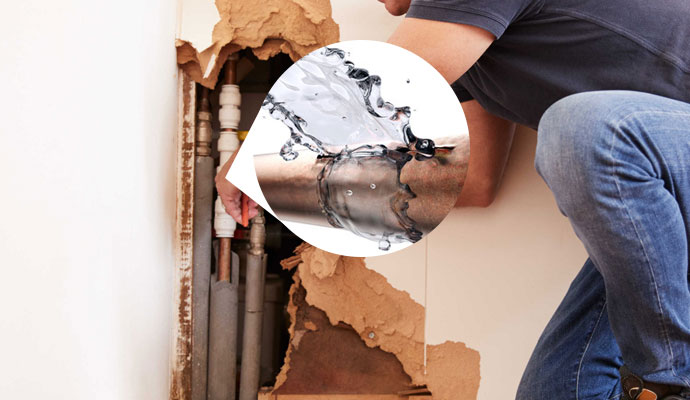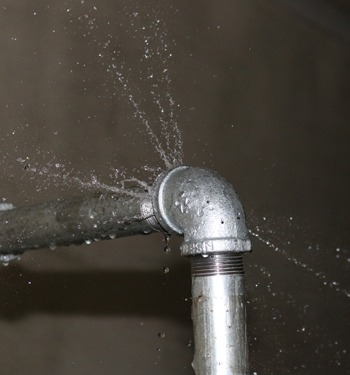Handling Flood Damage Caused by a Leaking Water Pipe - Essential Tips
Handling Flood Damage Caused by a Leaking Water Pipe - Essential Tips
Blog Article
How do you really feel with regards to Water Damage: Tips On What To Do When Your House Is Flooded?

What should you do if a water pipe ruptureds in your residence, producing a mini-waterfall and flooding a location of your home? The longer you wait, the extra severe the water damage in your residential or commercial property. For these factors, you require to discover what to in case of a burst water pipeline.
Shut Off the Main Waterline Shutoff
The first thing you have to do is shut the shut-off shutoff. Seek the regional shut-off valve to turn-off water in one certain location only. If you don't recognize where the local shut-off shutoff to the component is, you have to turn-off the primary waterline shutoff. This will cut off the water in your whole house. Typically, the main shutoff is discovered outside the home alongside the water meter. You can also locate it in the basement at an eye-level or it can be in the 1st flooring on the ground if it's not there. Normally, home builders yet the shut-off valve generally ground degree restroom or appropriate next to it.
Call Water Damages Remediation Pros for Assistance
After closing the water resource, call the pros for help. With their professional help, you can minimize exacerbation since water can permeate through your points resulting in warped baseboards, loosened ceramic tiles, or damages framework.
Document the Damages For Insurance coverage
As you are awaiting the pros to arrive, document the damage brought on by the wayward pipe. Take pictures and also video clips of whatever. Do closeup shots of valuables. These points will certainly function as proof for your house owner's insurance coverage. Remaining positive with this allows you to sue for coverage, which will certainly aid you as well as your family members return on your feet.
Salvage Points That Can Be Conserved
Once you're done taking images, browse the items and get one of the most vital ones from the pile. Dry them off and also attempt to protect as long as you can. Drag them far from dampness so they can start to dry out.
Start the Drying Process
While waiting for the pros, you can start the drying out process. Luckily, water from your waterlines are tidy so you do not have to stress over sewage system water. Nonetheless, the flowing water may have disrupted the dust as well as particles in your floorboards and also carpetings. Be prepared with gloves as you use pails to unload out the water. Blot out as a lot as you can with old towels. You can additionally activate an electric follower or open home windows to advertise air blood circulation. This will quicken drying out and also discourage mold and mildew as well as mildew development.
Professionals are the just one qualified to take care of the burs pipelines and subsequent damages. And also keep in mind, pipelines don't just instantly ruptured. You will typically see red flags like gurgling paint, odd sounds in the plumbing, musty odor, caving ceiling, peeling wallpaper, or water stains. Focus on these things, so you can nip any kind of issues in the bud.
What should you do if a water pipe bursts in your home, producing a mini-waterfall as well as flooding a location of your home? For these factors, you need to discover what to in instance of a burst water pipeline. After shutting the water source, call the pros for aid. With their professional aid, you can mitigate exacerbation due to the fact that water can seep with your points resulting in deformed baseboards, loose ceramic tiles, or damages framework. Thankfully, water from your waterlines are clean so you do not have to fret concerning sewage system water.
Steps to Deal with a Burst Pipe and a Flooded House
Disconnect your electrical
To prevent electrocution, make sure the electrical systems in your home are turned off. Do not wade into standing water with the power on. If water is blocking your path to your breaker box, look for a main shutoff on the exterior of your home or call an electrician.
Stop the source of the flooding
If your flooding is caused by a burst pipe or valve rather than an act of nature, it should be fairly easy to stop at its source. Just turn off the main water shutoff valve. Some homes have a valve located near where the main water line enters your home, while other homes have a valve attached or adjacent to a water meter, which is sometimes buried near the street.
Call your insurance company
Your water damage will most likely be covered under your homeowners insurance policy. The first step to start the claims process is to call your insurer to let them know about the situation. To make sure that your claim is successful, ask your insurer whether a claims adjuster needs to visit your home to document the damage before you begin the cleanup and repair process, or if your photos of the damage will suffice.
Document everything
No matter what your insurer says, it's always a good idea to carefully document all the water damage to your home to assist with your insurance claim. Simply take photos and videos with your phone and make note of everything the water touched, including your possessions and the structure of your home itself.
Remove standing water
If the water is primarily in your basement, and you have a floor drain, you may be able to use a squeegee mounted on a handle (pick one up at any hardware store) to push water to the drain, or use a mop and bucket. With most of the standing water removed, use a wet-dry vac (make sure to remove the filter for dry vacuuming) to start removing water from harder-to-reach areas.
Start drying out your home yourself
While you are waiting for your contractor to get started, you can begin the process of drying out your home by following these steps: a) open your windows to let moist air escape; b) start as many dehumidifiers as possible; c) cycle your HVAC system between heating (to 80 degrees) and cooling (to 60 degrees), which pulls moisture into the air and then removes it. You can rent industrial-size blowers and dehumidifiers to speed up the drying process.
Prevent mold and mildew caused by water damage
The damage to your home and property is only half the battle. If not properly dealt with, water damage can have farther-reaching effects on your home and health in the form of toxic mold and mildew. In fact, these secondary effects are often worse than the initial property damage, so it's important to take them seriously and dry out the affected areas as quickly as possible. If a surface can't be dried quickly, it should be removed and discarded. If you are working with a water damage cleanup company, they will have the proper equipment to dry out your home. If you are cleaning up the water damage yourself, be sure to educate yourself on how to remove and repair wet drywall and insulation, as well as flooring.
https://www.crddesignbuild.com/blog/10-steps-to-deal-with-a-burst-pipe-and-a-flooded-house

I'm very serious about The Do s And Don ts When Water Floods Your Home and I am hoping you liked the entire blog post. Sharing is good. You never know, you could be helping someone out. Thanks a bunch for your time. Come back soon.
Explore Report this page